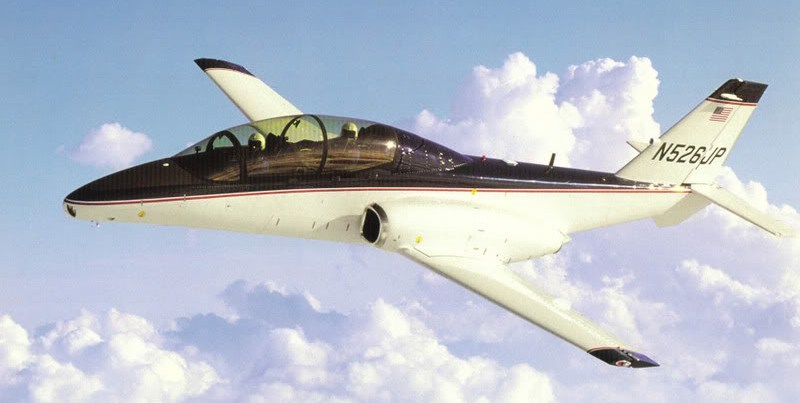

The CitationJet That Wasn’t by John Hall | The JetAv Blog.
Question: What version of the CitationJet was designed, manufactured, flight tested, certified but never delivered?
Answer: The Model 526 CitationJet.
In the early 1990s the U.S. military issued a Request For Proposal (RFP) for a new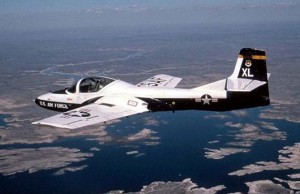 military training aircraft to replace the aging fleet of Air Force Cessna T-37 twin jet and Navy T-34C turboprop trainers. In an effort to save military budget dollars, the RFP called for an FAR Part 23 certified “non-developmental item” or off the shelf aircraft. As this product simply didn’t exist, Cessna went to work on a missionized derivative of its recently certified model 525 CitationJet business jet, and Raytheon Aircraft (now Hawker Beech), partnered with Pilatus utilizing a version of its already successful PC-9 Mk II trainer. Several other
military training aircraft to replace the aging fleet of Air Force Cessna T-37 twin jet and Navy T-34C turboprop trainers. In an effort to save military budget dollars, the RFP called for an FAR Part 23 certified “non-developmental item” or off the shelf aircraft. As this product simply didn’t exist, Cessna went to work on a missionized derivative of its recently certified model 525 CitationJet business jet, and Raytheon Aircraft (now Hawker Beech), partnered with Pilatus utilizing a version of its already successful PC-9 Mk II trainer. Several other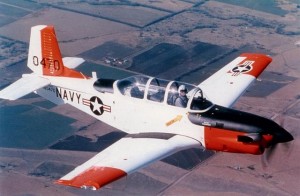 U.S. contractors entered the competition, all partnering with a foreign manufacturer. This RFP was more commonly known as the Joint Primary Aircraft Training System, or JPATS, and Cessna was the only all-American team in the competition.
U.S. contractors entered the competition, all partnering with a foreign manufacturer. This RFP was more commonly known as the Joint Primary Aircraft Training System, or JPATS, and Cessna was the only all-American team in the competition.
The model 526 CitationJet program utilized a small team consisting of primarily previously retired Cessna engineers and fabricators who created the flying prototype in record time. The team also fabricated production tooling, and assembled the first production aircraft that was used in the certification process and as a flight evaluation demonstrator. The prototype aircraft first flew in December 1993, and the one and only production aircraft the following March of 1994.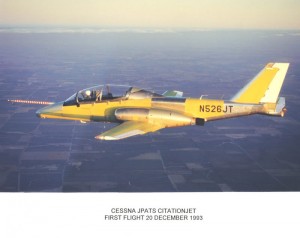 The production aircraft received FAR Part 23 certification meeting aerobatic criteria on June 22, 1994. This is a record timeline, just 6 months, for any certification program I am aware of from first flight to full FAA certification. Flight test consisted of over 500 flight hours and 850 spins.
The production aircraft received FAR Part 23 certification meeting aerobatic criteria on June 22, 1994. This is a record timeline, just 6 months, for any certification program I am aware of from first flight to full FAA certification. Flight test consisted of over 500 flight hours and 850 spins.
The JPATS CitationJet featured 75% commonality with the model 525 CitationJet including FJ44 engines (derated), wings, landing gear, electrical, hydraulic and fuel systems. Avionics were also similar to its business jet cousin. New was the tandem two-seat fuselage with canopies and zero-zero ejection seats, and redesigned empennage which gave it the distinctive “fighter” appearance. The aircraft was to be manufactured on the model 525 CitationJet production line to capitalize on existing facilities and workforce.
Since the aircraft was certified under FAR Part 23, many held hopes that it would be offered in “civilian” configuration as well.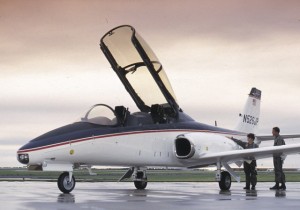 The 526 was shown at many Cessna customer events, and I personally had numerous clients ready to give me their deposit should Cessna decide to go this route. Unfortunately, this was not to be.
The 526 was shown at many Cessna customer events, and I personally had numerous clients ready to give me their deposit should Cessna decide to go this route. Unfortunately, this was not to be.
Cessna, as did much of the aviation press, thought they were the front runner in the JPATS competition. In fact, the local Wichita newspaper’s headline the day of the award was “CESSNA WINS JPATS COMPETITION”. Wish I would have kept a copy. When the award was officially announced later that same day, it went to Raytheon Aircraft and its Pilatus PC-9 variant, now named the T-6A Texan II by the military. So the rest is history, and now you know the story of the CitationJet that wasn’t.
Premier Jet invites your feedback via the comment section below.

Very interesting article. This version would have made a great trainer but the military was too entrenched in linear thinking. I appreciate your take on our history. Thanks John for putting it to record.
I know they chopped up the prototype, I wonder if serial number 1 is still around? Anyone?